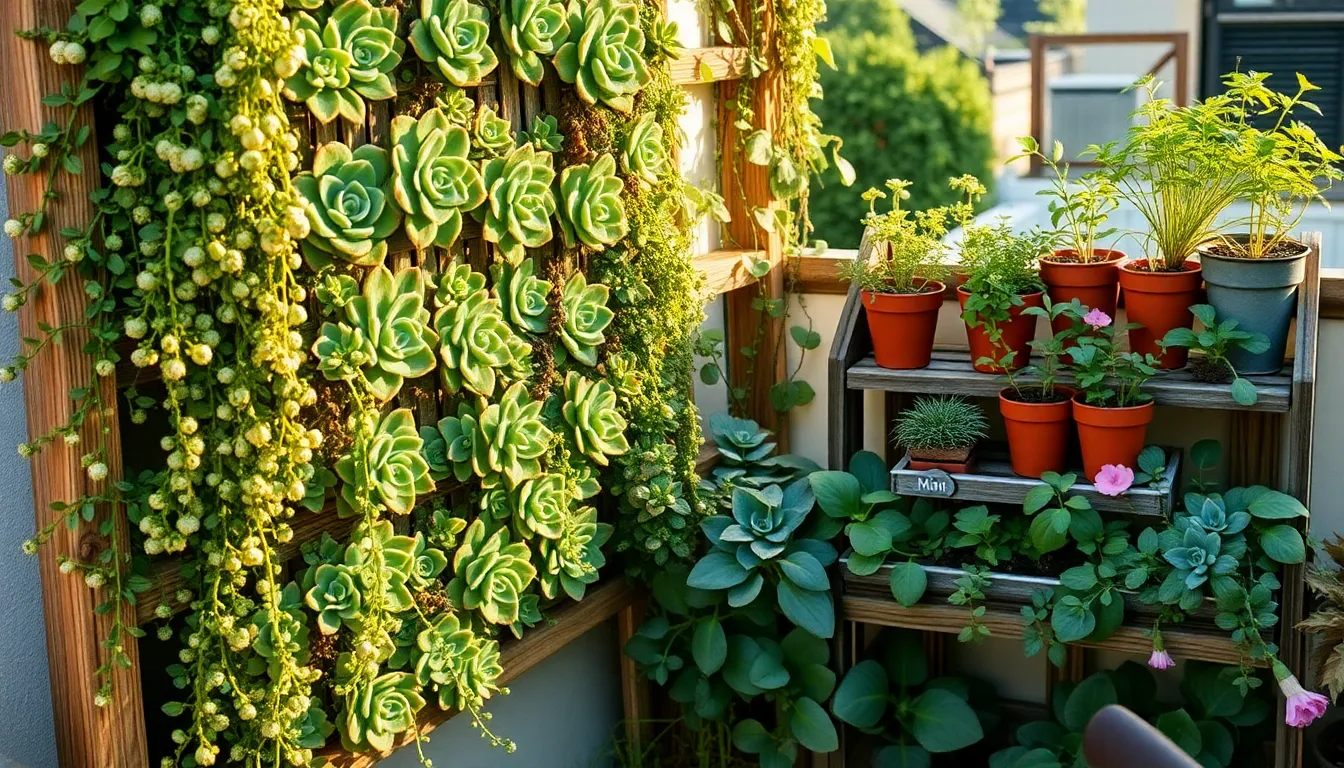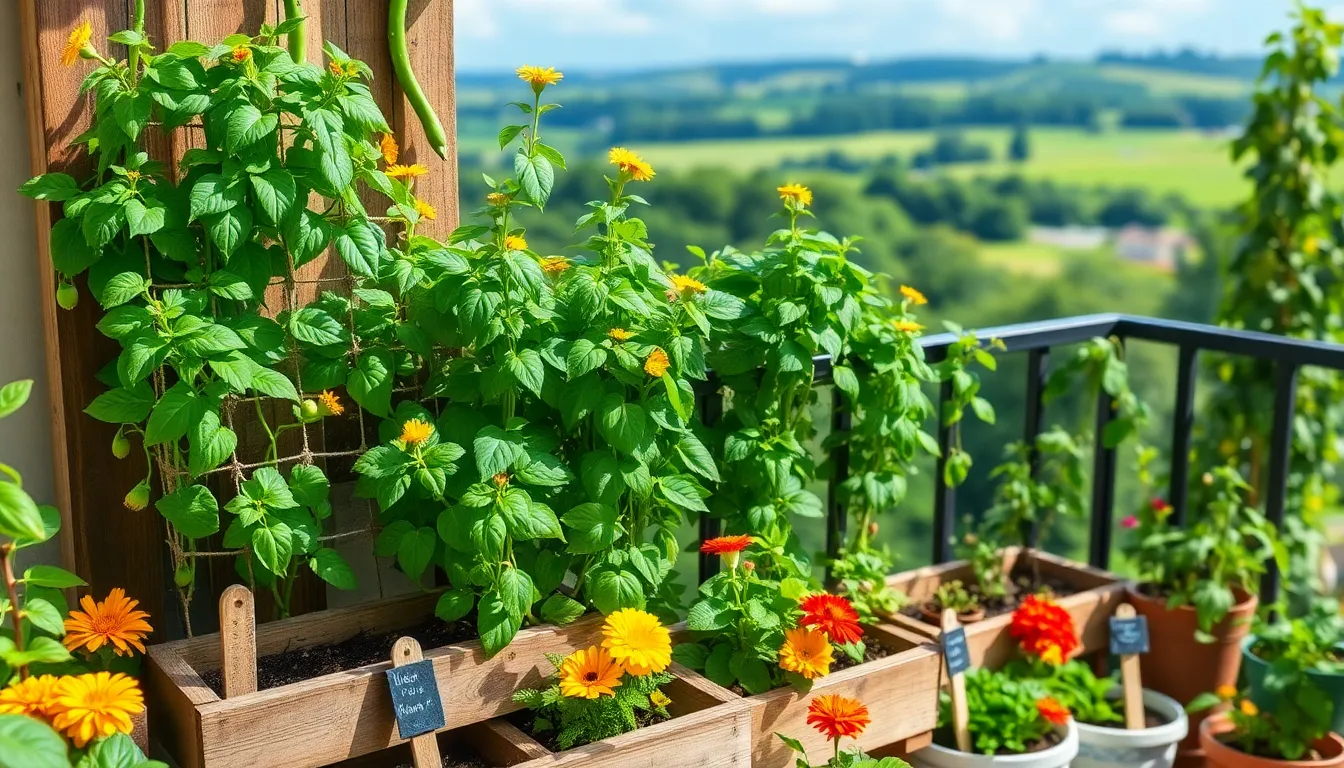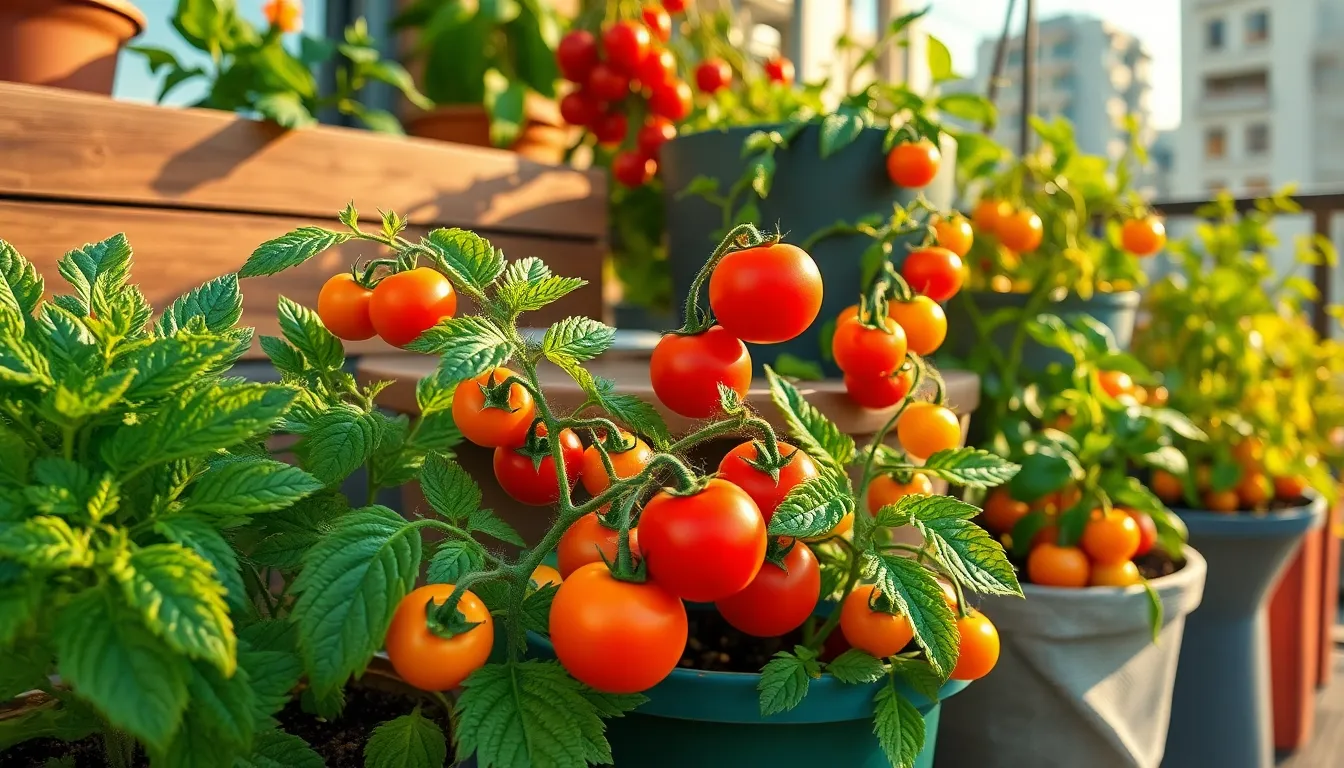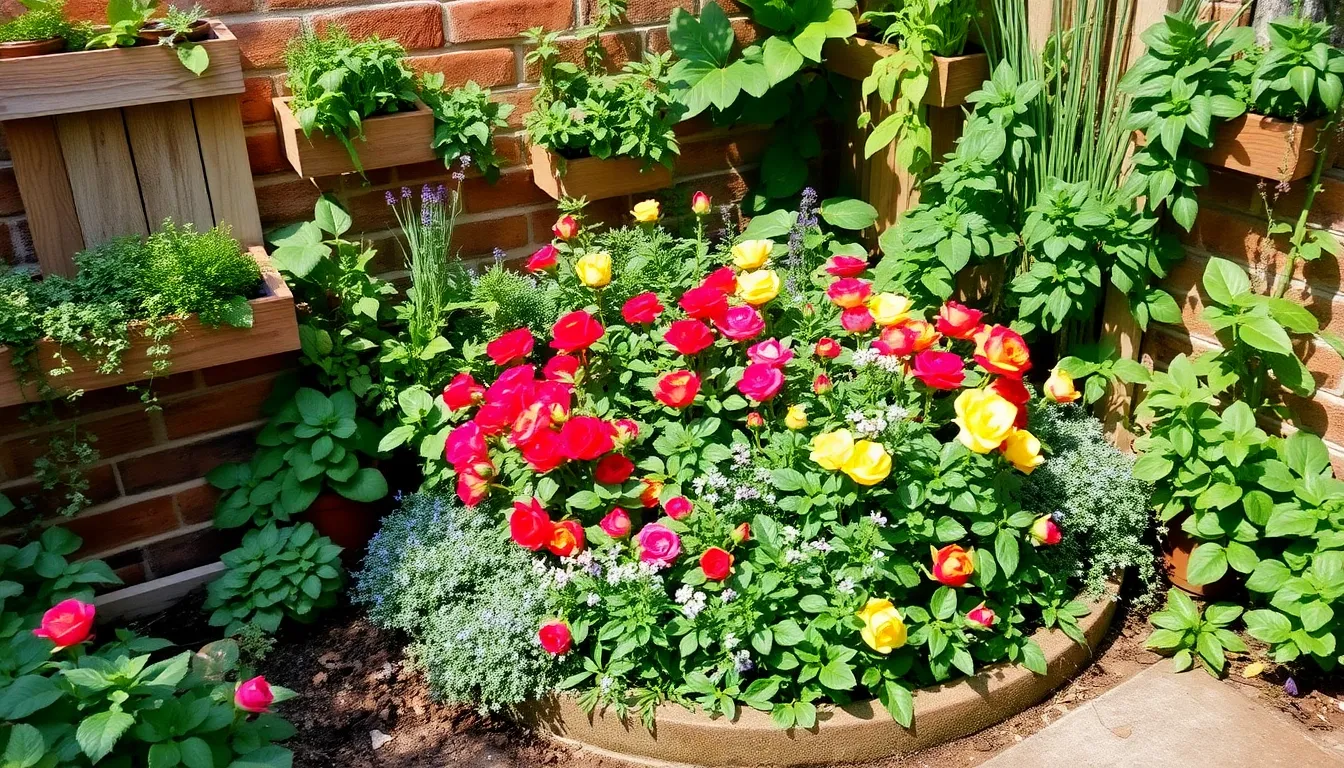Imagine stepping into your apartment and being greeted by a lush, vibrant oasis that you’ve created yourself, right within the confines of your home. Whether you’re a budding gardener eager to cultivate your first green sanctuary or a seasoned plant enthusiast looking to transform your small space into a thriving retreat, this guide is your ticket to a flourishing indoor garden.
Unlocking the potential of your compact living area, “Best Small Space Garden Ideas for Apartments” offers a treasure trove of innovative designs and practical techniques that cater to every level of gardening expertise. You’ll discover how to maximize your space, enhance your home’s aesthetic appeal, and even improve air quality, all while indulging in the satisfying, therapeutic act of nurturing plants.
Embrace the joy and rewards of gardening, knowing that each idea and strategy included here has been crafted to ensure your success. With these insights, you can confidently embark on your gardening journey, transforming any nook or cranny into a vibrant, green masterpiece.
Vertical Herb Planters (Space-Saving Aromatics)
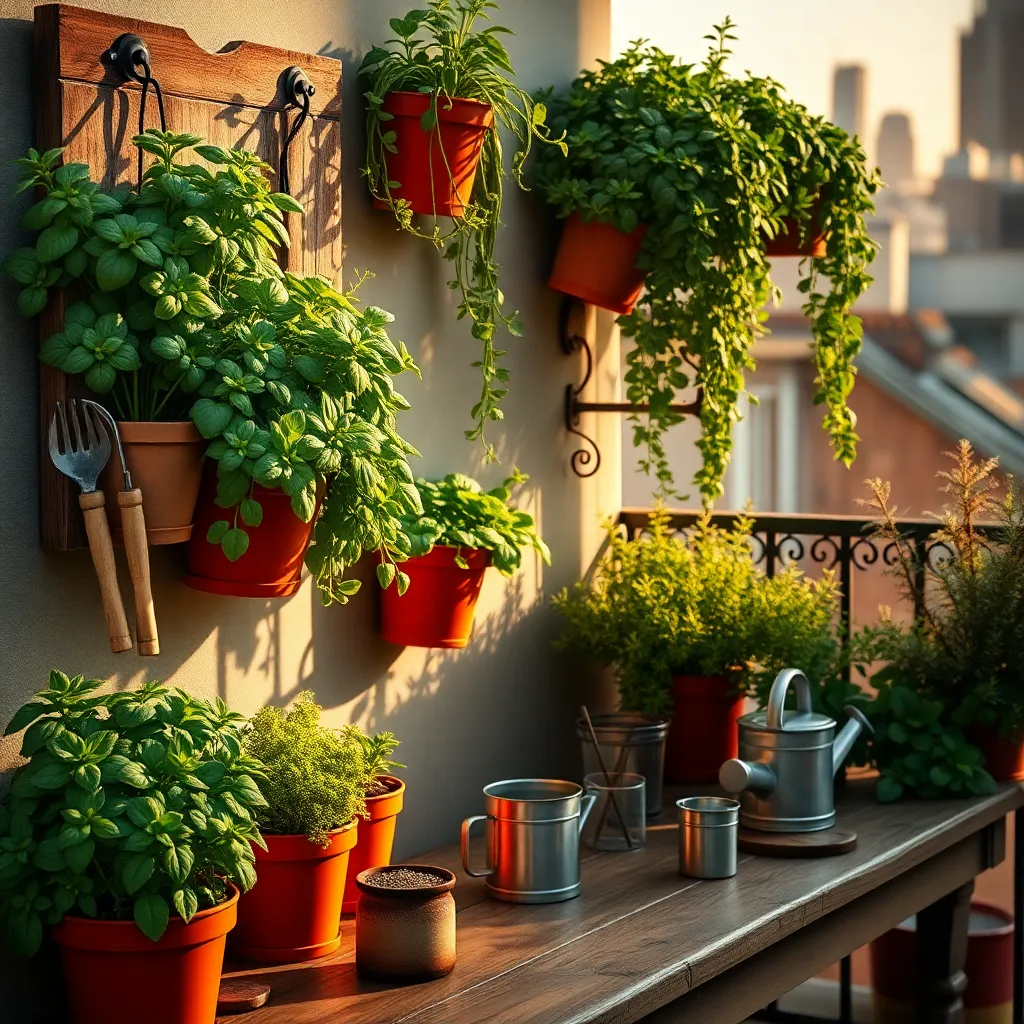
Incorporating vertical herb planters into your apartment garden is an excellent way to utilize limited space while enjoying fresh aromatics. These planters can be affixed to walls or placed on balconies, making them ideal for urban environments where horizontal space is scarce.
To start, choose a sturdy frame or pockets designed for vertical gardening, ensuring it has good drainage. Fill each section with a high-quality potting mix, enriched with compost to provide the necessary nutrients for herb growth.
Herbs like basil, thyme, and parsley thrive in vertical planters due to their compact growth habits and sunlight requirements. Position your planter in a spot that receives at least six hours of sunlight daily, as most herbs prefer bright, direct light.
Watering frequency is crucial for the success of your vertical herb garden. Typically, herbs in vertical planters need watering every 2-3 days, but always check the soil moisture first to avoid overwatering, which can lead to root rot.
For more advanced gardeners, consider integrating a drip irrigation system to automate watering and ensure consistent moisture levels. This can be particularly beneficial in warmer climates or during peak growing seasons when plants may dry out more quickly.
Compact LED Grow Lights (Indoor Sunlight Solution)
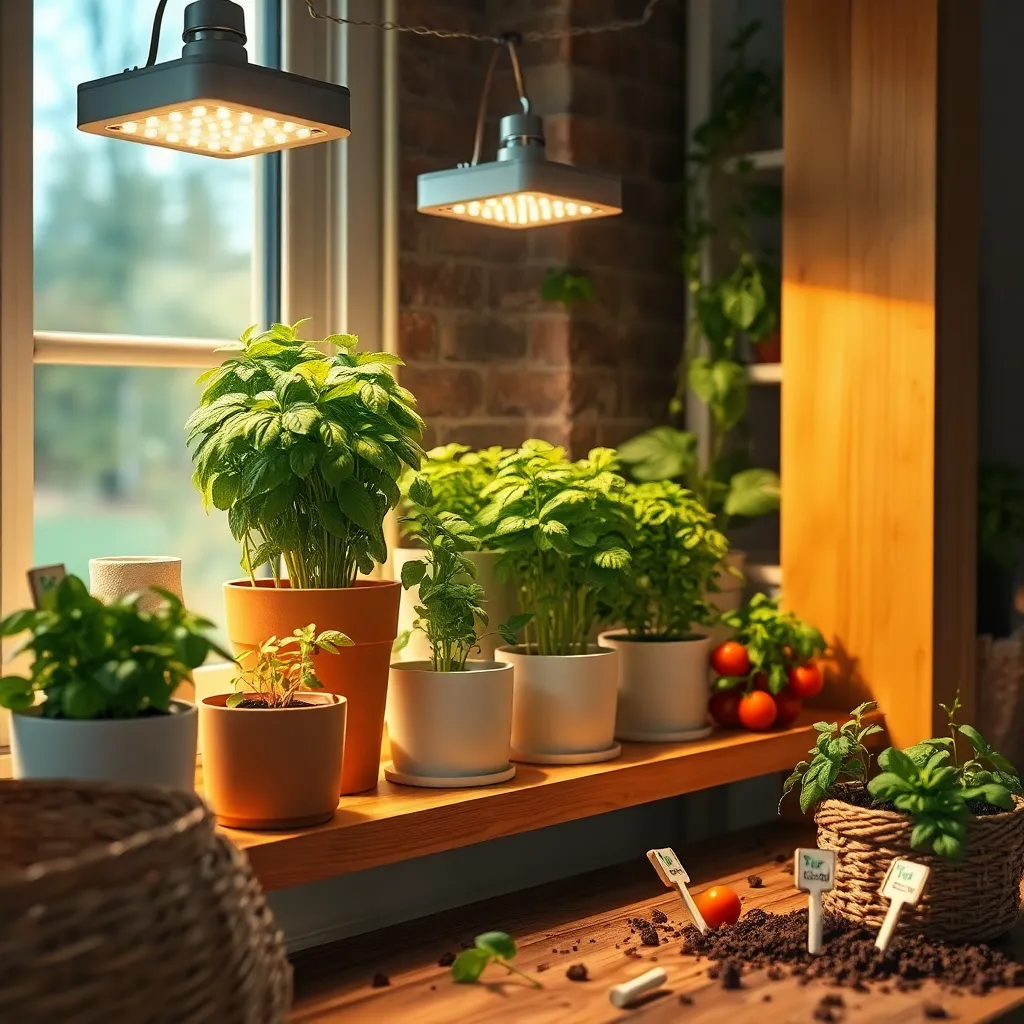
Compact LED grow lights are an excellent solution for apartment gardeners who lack natural sunlight. These lights mimic the full spectrum of sunlight, providing your indoor plants with the energy they need to thrive.
Installing LED grow lights is straightforward and can dramatically improve your plant’s growth. Simply place the lights 6-12 inches above your plants, adjusting the height as they grow to ensure they receive optimal light exposure.
For beginners, start with adjustable LED grow lights that allow you to change the light intensity as your plants mature. This flexibility can help prevent issues like leaf burn or leggy growth, common problems when lighting is too intense or insufficient.
Advanced gardeners can experiment with programmable LED grow lights that simulate day and night cycles. This feature can help synchronize plant growth with natural rhythms, enhancing overall plant health and productivity.
Self-Watering Containers (Low-Maintenance Hydration)
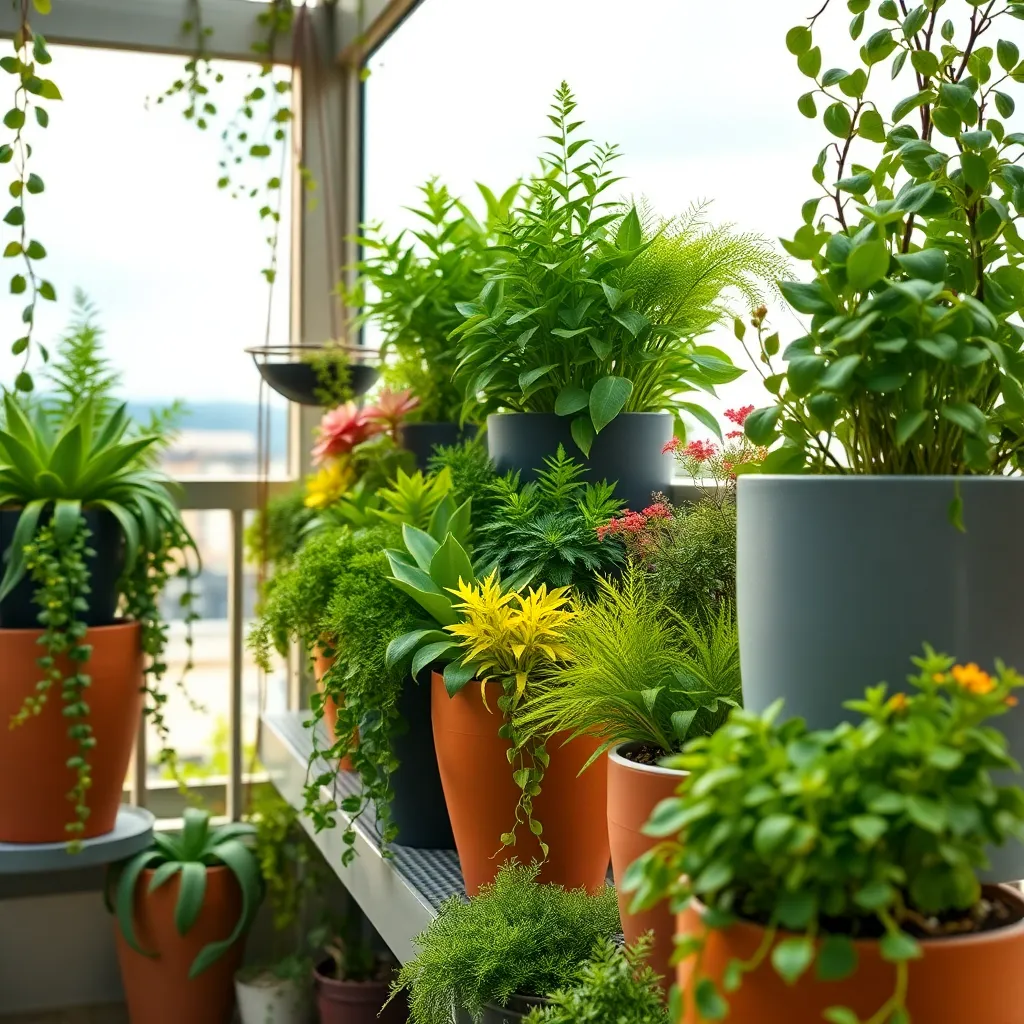
Self-watering containers are a fantastic solution for apartment dwellers looking to maintain healthy plants with minimal effort. These containers use a reservoir system that allows plants to absorb water as needed, reducing the frequency of manual watering.
To get started, choose a self-watering container that fits your space and the type of plants you intend to grow. Ensure your container has a fill tube and a water level indicator for easy maintenance.
For optimal results, use a lightweight potting mix that includes materials like perlite or vermiculite to enhance water retention. Avoid using garden soil, which can compact and obstruct the water uptake system.
Beginner gardeners will appreciate the reduced need for daily care, while more experienced gardeners can experiment with a wider variety of plants. Advanced tip: Consider adding a layer of mulch on top of the soil to further retain moisture and reduce evaporation.
Regularly monitor the water reservoir, especially during hot weather, to ensure your plants have a consistent supply of moisture. By integrating self-watering containers into your apartment garden, you can enjoy lush, thriving plants with less hassle.
Dwarf Fruit Trees (Balcony-Friendly Harvest)
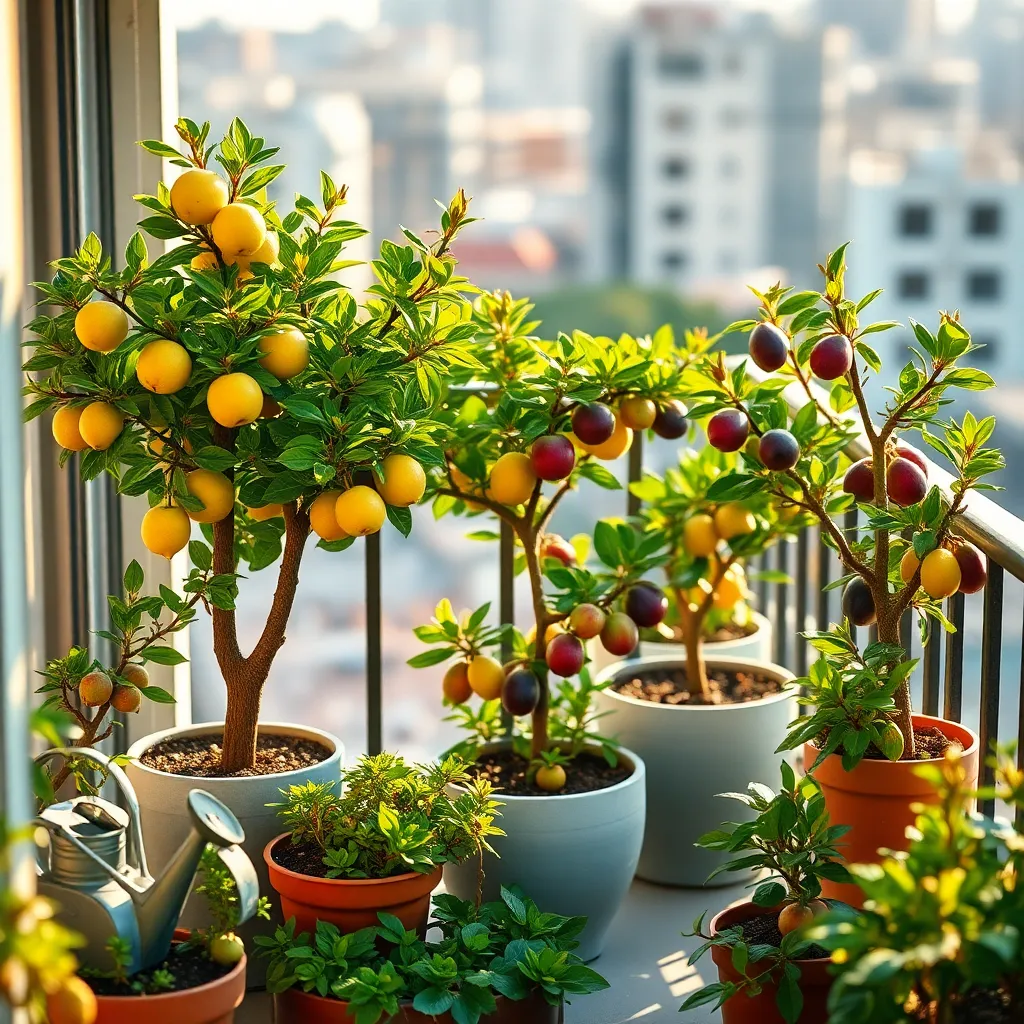
For apartment dwellers with limited space, dwarf fruit trees offer a delightful way to enjoy homegrown produce right on your balcony. These compact trees are bred to stay small, making them ideal for container gardening and providing a bountiful harvest even in confined areas.
When selecting a dwarf fruit tree, consider varieties like dwarf citrus, apple, or fig, which thrive well in pots. Ensure your container is at least 18 inches wide and deep, providing enough room for root development and stability.
Proper care is essential for these miniature fruit trees to flourish. Use a well-draining potting mix enriched with organic matter, and water consistently to keep the soil moist but not waterlogged.
Position your tree in a spot where it will receive at least 6 to 8 hours of sunlight daily. Regularly rotate the pot to ensure all sides of the tree get equal light exposure, encouraging even growth.
Fertilize with a balanced, slow-release fertilizer designed for fruit trees. Pruning is crucial to maintain shape and improve airflow, which helps prevent diseases and promotes healthy fruit production.
Hanging Pocket Gardens (Wall-Mounted Greenery)
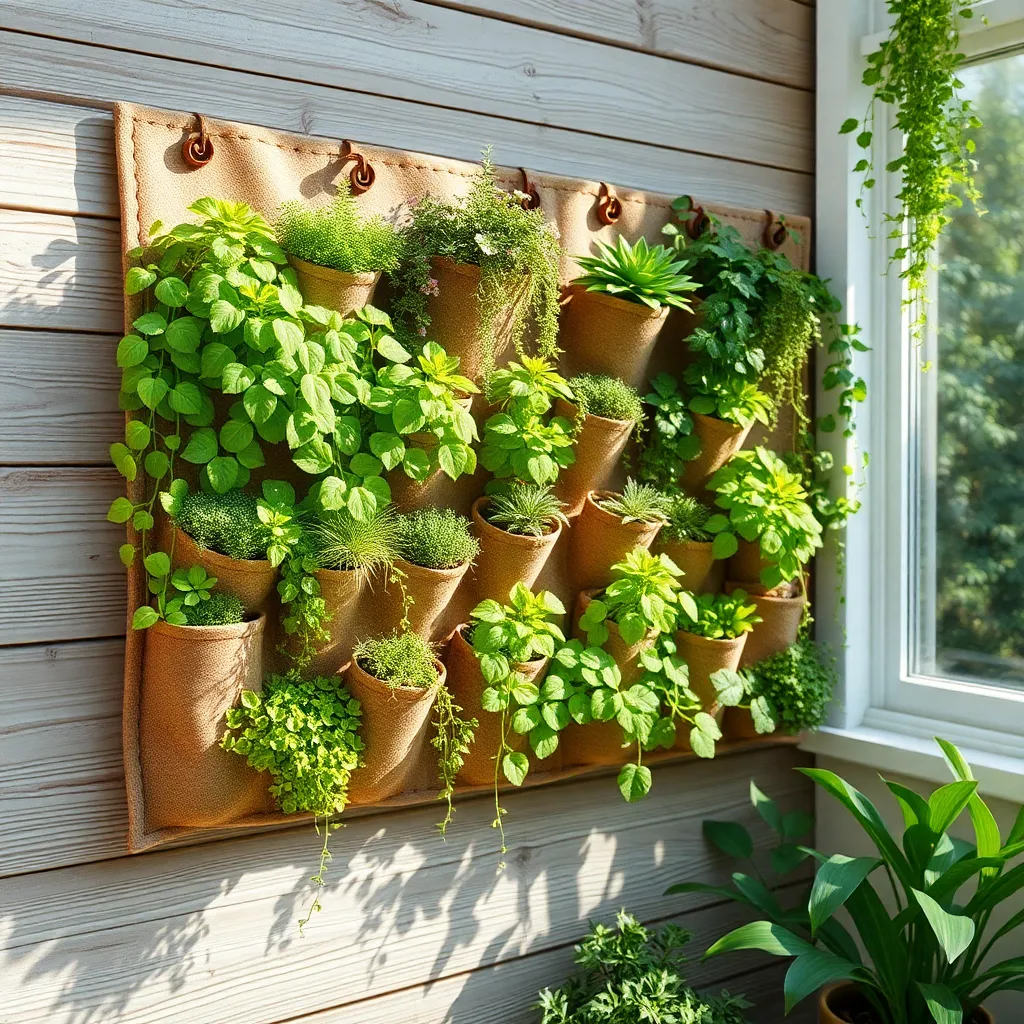
Hanging pocket gardens are a fantastic way to introduce greenery into small apartment spaces. They allow you to grow a variety of plants vertically, making the most of your limited space.
To start, choose a wall that receives plenty of indirect sunlight, as this will ensure your plants thrive. Vertical planters come in various materials, but breathable fabrics, like felt, are ideal as they allow for good drainage and air circulation.
When selecting plants, opt for small, low-maintenance varieties such as herbs, succulents, or ferns. Herbs like mint, thyme, and basil are perfect for their compact growth and frequent use in cooking, making them both practical and ornamental.
Ensure each pocket is filled with a light, well-draining potting mix to prevent root rot. Watering can be a bit tricky due to gravity, so it’s best to water the plants slowly and let excess water drip down to lower pockets, ensuring uniform moisture.
For more advanced gardeners, consider incorporating a drip irrigation system to automate watering, reducing maintenance and ensuring consistent moisture levels. Additionally, feeding your plants every few weeks with a diluted liquid fertilizer will promote healthy growth and lush foliage.
Conclusion: Growing Success with These Plants
In exploring the art of nurturing relationships through small space gardening, we’ve uncovered five transformative concepts: communication, patience, creativity, adaptability, and nurturing. Just as a garden flourishes with attention and care, so too do our relationships thrive when we communicate openly, exercise patience, and think creatively about solutions. Adaptability, much like choosing the right plants for a small space, allows us to grow and evolve with our partners, while nurturing ensures both our garden and relationships are continuously enriched.
Take the first step today by selecting one small garden project you can embark on together. This shared experience not only strengthens your bond but also creates lasting memories. As you nurture your garden, let it remind you of the care needed in your relationship.
Bookmark this article as a guide and inspiration for future garden adventures and relationship reflections. By keeping these principles close, you’ll be well-equipped to cultivate a relationship that blossoms beautifully over time. Remember, just as a garden transforms with each season, your relationship, when tended with love and intention, has the potential to thrive and flourish endlessly.

